This time last year a major change to how we share data through the NBN took place.
It was the end of an era with the decommissioning of the NBN Gateway on the 31 March 2017. The NBN Gateway had been an excellent tool enabling data sharing on a scale never seen before in the UK, but the technology behind it needed to be significantly updated and the NBN Atlas was developed as its replacement.
As the NBN Gateway was being decommissioned, we had developed the first phase of the NBN Atlas, which, along with the NBN Atlas Wales, was live and available on 1 April 2017. These two NBN Atlases joined the NBN Atlas Scotland, which had launched the previous year. Despite the tight timescales, we had a functioning biological information management infrastructure up and running, within budget, on time and with a massive 215 million species records available. None of us should underestimate that achievement.
So, what has happened in the year since launch? We thought it would be interesting to show how much more has been achieved along with some key statistics.
Number of Records on the NBN Atlas
As at 23 March 2018, the NBN Atlas held just over 218 million species records, an increase of 3 million since launch. Taking into account that we were unable to transfer some data partner records from the NBN Gateway to the NBN Atlas due to access and licensing concerns, this is a very positive increase. It is especially important to remember that there were only 133 million records, of which only 71% were publicly available, on the NBN Gateway when it was decommissioned.
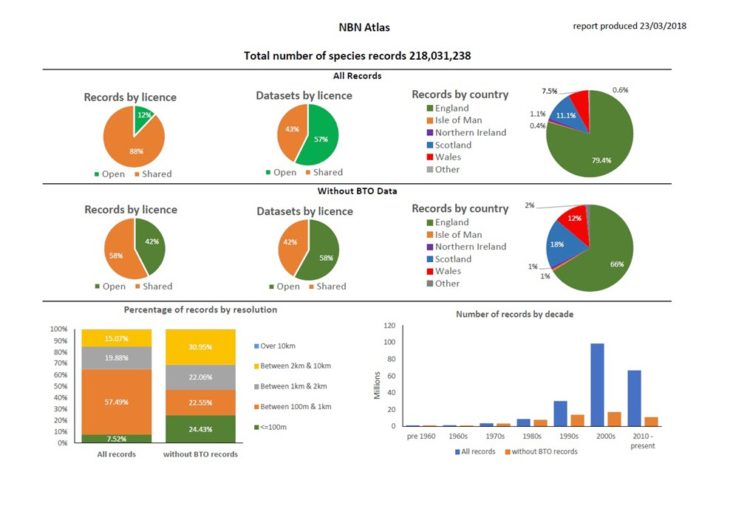
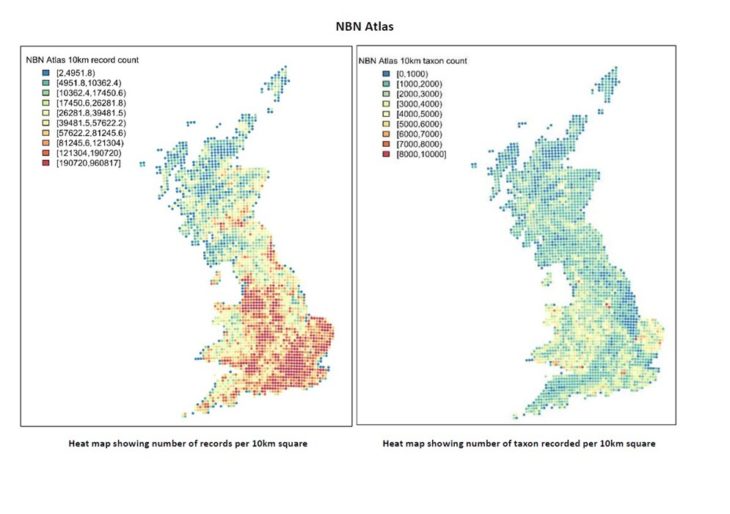
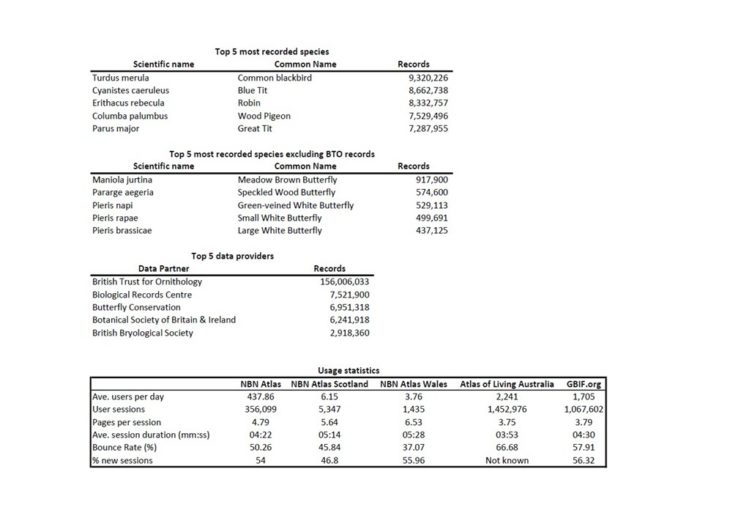
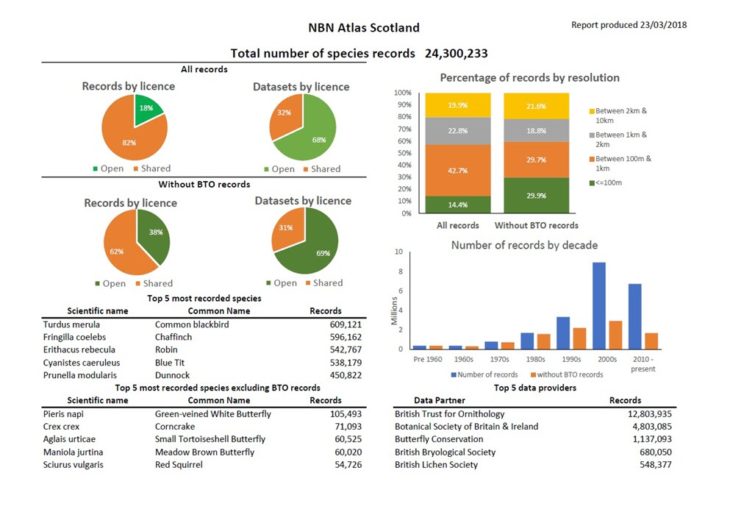
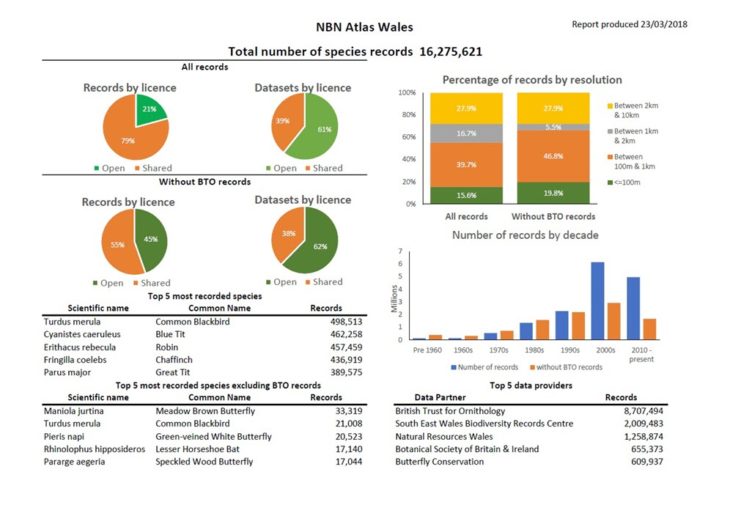
Number of data partners
On 1 April 2017, 111 data partners were sharing data through the NBN Atlas. As of 1 April 2018 there are now 127 data partners.
Number of registered users of the NBN Atlas
As of 3 April, there were 3219 registered and active users of the NBN Atlas. This is a reduction on the number of users (5449) who logged into the NBN Gateway during 2016 – 17, but the figure is seeing significant increases each month and the average users per day is 434. It should also be noted that a lot of NBN Atlas functionality can be used without registering, so the total number of users is likely to be a higher figure.
Download limits
In July, we removed the original download limit of 50,000 records and replaced it with a much higher figure of 10 million records. With the 10 million record download facility users are able to download all the data for any species and all the data for any dataset except for the BTO dataset – Birds (BTO+Partners) which has 151 million records.
Data upload templates and guidance
We produced data upload templates and guidance for sharing data via the NBN Atlas platforms.
All of the NBN Atlases hold their data in Darwin Core format, the internationally recognised standard for biodiversity data.
Latest developments
New addition to the NBN Atlas family
As of 3 April 2018, we are delighted to announce the launch of the NBN Atlas Isle of Man. Read more in our news story.
Images on the NBN Atlas
We are in the process of removing all of the Encyclopaedia of Life images and replacing them with the very generous contributions of some of our Network partners. We have had 2,000 images and occurrence records from Dave Fenwick (APHOTOMARINE) since 2017 and are now adding 230 images from Derek Crawley of the Mammal Society and 45,000 records and over 100,000 images from Malcolm Storey (BioImages). Paula Lightfoot has also supplied 20 images. We are hugely grateful for the provision of images to the NBN Atlas and would like to thank all of our contributors.
As well as removing the EoL images, we are in the process of reviewing the layout and presentation of images on the NBN Atlas to ensure they have a consistent look and feel.
If you would like your images to be shared with the NBN Atlas please read our guidance for sharing species images or contact data@nbn.org.uk
Verification Status of Records
Occurrence records on the NBN Atlases now require an identification verification status. There are six options for data partners to choose from:
- Accepted
- Accepted – correct
- Accepted – considered correct
- Unconfirmed (default)
- Unconfirmed – plausible
- Unconfirmed – not reviewed
The description of each option can be found on the NBN Atlas Documentation and Help Portal. Although not available yet, Accepted and Unconfirmed records will be displayed in different colours on the occurrence record maps. It will also be possible to filter and search records by identification verification status. These changes will be available on the NBN Atlases in early April.
Sensitive Species Policy
An updated policy is now available and an updated sensitive species list will be ready by mid-April. Read more about Sensitive Species and go to the Sensitive Species Policy
NBN Atlas Documentation and Help Portal
This new site brings together information and guidance for users of the NBN Atlas, NBN Atlas Scotland, NBN Atlas Wales, NBN Atlas Isle of Man and all subsequent NBN Atlases, in a clear way, with straightforward navigation to each of the subject areas.
The NBN Atlas Documentation and Help Portal can be found by clicking on the ‘Help’ link on the top right hand side of each of the NBN Atlases.
Future developments
Much has been achieved over the last year, but there are more developments planned for the future. Here are just a few examples of work to come:
- Enhanced access to sensitive species data
- Improvements to the downloads, including;
- Improving heading descriptions
- Changing download fields
- Changing order of fields in downloads
- Ability to save user profiles
- Ability to annotate individual records
